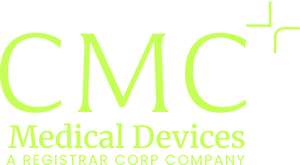MDR and IVDR Certification: Key Insights from the 14th NB Survey
Written by: Manuel Mateos CEO and Regulatory Affairs Director, CMC Medical Devices & Drugs S.L.
The availability of medical devices in the EU is closely linked to the certification capacity of Notified Bodies (NBs). To monitor this dynamic, the European Commission launched a recurring survey collecting data from all designated NBs under the MDR and IVDR.
The 14th NB survey, published on 25 July 2025, offers updated figures on:
- The number of applications submitted and certificates issued
- Timeframes for certification
- Common reasons for application refusal
- Collaboration with EU Reference Laboratories (EURLs) for high-risk IVDs
- Trends in the certification of devices with no medical purpose
This extensive monitoring effort is part of the European Commission’s strategy to evaluate the availability of certified devices on the EU market and to support the effective implementation of MDR and IVDR.
You can download the full survey report here: Download the 14th NB Survey – July 2025 (PDF)
MDR: High application volumes, growing backlogs
As of February 2025:
- 28,489 applications for MDR certification had been lodged.
- Only 12,177 certificates were issued.
- Over 5,000 applications concerned changes to existing MDR certificates.
Despite the high number of written agreements signed (18,476), application refusals reached 650, with the main reasons being incomplete documentation and applications falling outside the scope of the NB’s designation.
Notably, more than 50% of the time required for certification is attributed to the manufacturer’s side, mostly due to document revision delays.
IVDR: Class D and EURL collaboration still limited
For in vitro diagnostic devices:
- 2,395 applications were submitted
- 1,490 certificates were issued by February 2025
Among these:
- 765 applications and 466 certificates concerned Class D devices
- Only 3 out of 14 NBs had issued Class D certificates under EURL oversight
The majority of applications requiring EURL consultation involve infectious diseases such as hepatitis and respiratory viruses.
Key Takeaways for Manufacturers
- Prepare complete and accurate documentation before submission: over 60% of applications are still considered incomplete.
- Expect long timelines: the median time to obtain a QMS+Product certificate ranges from 13 to 18 months.
- Understand the NB’s designation scope: submitting outside of scope is among the top reasons for refusal.
Are you navigating MDR or IVDR certification?
We help you understand the current certification landscape and guide you in preparing a compliant technical documentation.
Contact us today to simplify your EU market access.




